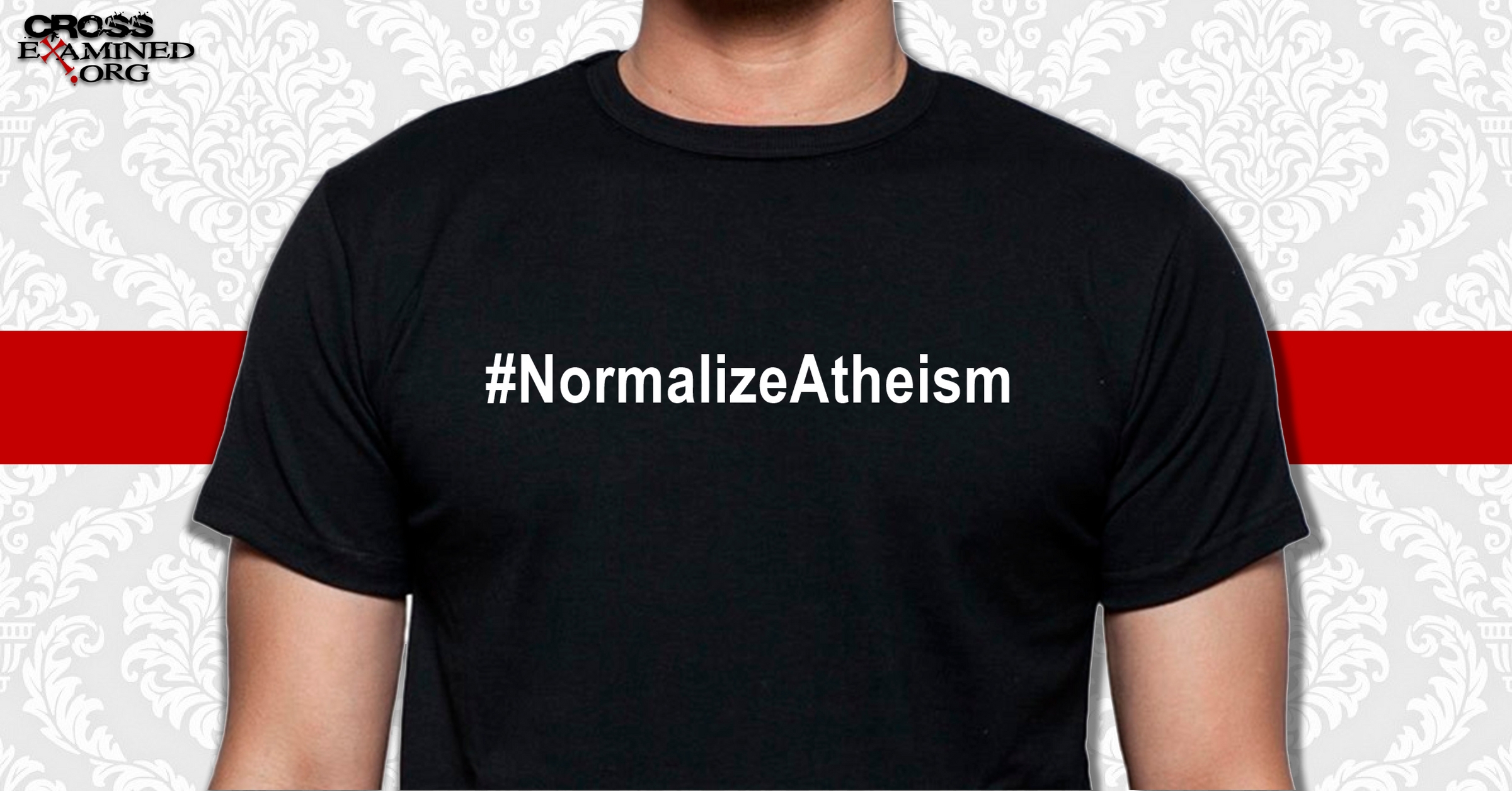What Christian Parents Should Learn from the Normalize Atheism Movement
By Natasha Crain
I recently encountered a movement underway on social media called “Normalize Atheism.” According to the website of the same name, the movement started a couple of years ago, but it seems to have picked up more speed recently. The basic idea is that atheists post a picture of themselves on social media, using the hashtag #normalizeatheism, to demonstrate that atheists are just like everyone else.
Why is that necessary? The website explains:
Even in countries where church and state are kept separate and mainstream religious practice is fairly moderate, atheists are marginalized, stigmatized, or simply ignored. And that’s a problem. Because if we want our society to be just, pluralistic, and inclusive, there needs to be space not only for the many varieties of religious believers but also for those of us who don’t believe. This isn’t an easy problem to solve…it’s a very old problem. Solving it will require changing the way atheists are perceived by the societies in which we live. And the first step toward realizing that change is reminding everyone else that we’re here. It doesn’t demand any particular political affiliation, it doesn’t necessitate the acceptance of a specific ideology. All it requires is for all of us who are able to speak up and say, ‘I’m an atheist. And I think it’s time for us to #NormalizeAtheism.’”
Here are a few examples of what people are posting:




There is, of course, nothing wrong with such a movement. People (oftentimes Christians) do stereotype atheists in unfair ways, so I can appreciate why atheists would start something like this. The reason for this post is that I believe Christian parents should learn several important things from the movement, and I wanted to share those things with you today.
- Atheists are a minority, but their numbers don’t appropriately reflect their influence.
Depending on the survey you look at, and how atheism is defined, the percent of atheists in American is usually estimated to be under 10 percent. I’ve had parents ask me at speaking events why it’s so important to help our kids learn how to engage with the atheistic worldview when so few people are actually atheists. This question, however, misses the point: atheists may be a minority, but they are a vocal minority that your kids will hear from. There may be a lot more people who simply identity as “nothing in particular” on religious surveys, but they don’t organize campaigns called #NormalizeNothingInParticular. It’s not the numbers; it’s the influence that requires parents to thoughtfully engage with their kids on the atheist worldview today.
- Your kids will engage with atheists from a much earlier age than you probably did.
It may be tempting to think that atheist influence is only at some kind of organized political level, but that’s simply not the case. As the Normalize Atheism campaign readily demonstrates, atheists want a much more popular-level awareness. Reaching out through social media in this way is an excellent way to promote ideas to young people. Talking with your kids about the atheistic worldview isn’t a subject to have when they become teens. They should be well aware that some people don’t believe in God and why Christians have good reason to be confident God exists from the youngest ages.
- Kids must learn to distinguish between their feelings about people and the truth about those people’s beliefs.
The overriding message of the Normalize Atheism movement is that atheists are good people, just like everyone else. And if by good they mean they are people who can be nice, love others, be good citizens, and so on, they’re right! As Christians, we should never be teaching our kids that only those who love Jesus can match such a description. If we do, we’re seriously misleading them. Perhaps that sounds obvious, but I think the point has been lost on too many young people. I can’t tell you how many times I’ve heard teens comment that their atheist friends are “just as good of people” as their Christian friends—as if that has some implication for the truth of the Christianity. Here’s an atheist making the same claim herself:

Kids who haven’t been raised to think deeply about the nature of truth and worldviews are spiritually vulnerable to a likeability campaign like this. They can readily confuse their positive feelings for people with a fair evaluation of the truth of those people’s beliefs: “If all these atheists are such good people, why does Christianity matter?”
The answer is obvious for kids who have learned to think about these things: Truth is what corresponds to reality and has nothing to do with who’s nice and who’s not.
- Kids need to understand that there is often a difference between what atheists believe and what is logically consistent with an atheistic worldview.
An atheist recently commented on a blog post I wrote: “You have no way of knowing what I believe without talking to me.” I will never forget that comment because it raises such an important point that kids need to understand:
There is often a difference between what an individual atheist believes and what is logically consistent with an atheistic worldview.
In other words, this person was absolutely right. I don’t have any idea what they believe despite the fact they identify as an atheist. This is the case with any person. For example, someone might identify as a Christian but have non-Christian beliefs that are logically inconsistent with a Christian worldview (for example, some Christians believe in reincarnation).
Another example is in the picture I posted above. This lady says she lives her life by doing what is right. But in an atheistic worldview, there can be no objective right or wrong because there is no moral authority; moral judgments can only be a matter of opinion. Looking at the social media discussions in the Normalize Atheism campaign, there are many people who make claims inconsistent with what an atheistic world actually requires. When kids are not well-trained to understand this, they can be persuaded by beliefs that are logically incoherent.
- If you’re not prepared to discuss the evidence for God’s existence with your kids, atheists will be happy to fill the role.
While the idea of Normalize Atheism sounds innocuous enough, don’t think for a moment that the only thing atheists want is to have people see them in a more positive light. Just as Christians want to share our beliefs with others, atheists want to share their beliefs as well.
They’ll let you know that atheism represents reason, logic, and science (implying theism doesn’t):

They’ll let you know that atheism represents free-thinking (implying theists are all mindlessly indoctrinated):

They’ll let you know that if you believe God speaks to you, you need to see a “shrink”:

They’ll let you know that God is an imaginary friend:

I could continue with examples all day, but you get the point. If you’re not prepared to talk with your kids about why there’s good reason to believe God exists and why the claims of all these skeptics are unfounded, your kids’ faith may well suffer. As atheism indeed is becoming more “normal,” we have a great responsibility as parents to have these discussions with our kids.
Notes
My new book, Talking with Your Kids about God, comes out in just 5 days and is a complete guide for parents to all of the points raised by skeptics in this post and so many more. It walks you step-by-step through conversations on the evidence for God’s existence, the ins and outs of claims about science and God, the logical implications of an atheistic versus theistic worldview, and much more. Click here for the full table of contents and order information!
Original Blog Source: http://bit.ly/2h5ZPT7












Leave a Reply
Want to join the discussion?Feel free to contribute!